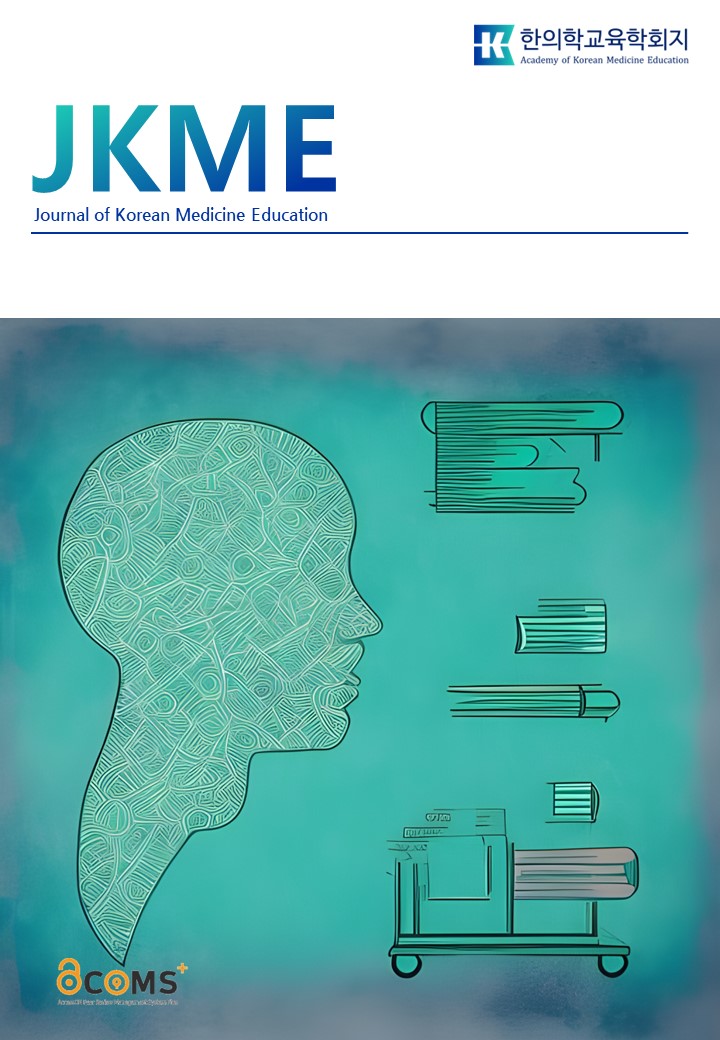- Log In/Sign Up
- KOREAN
- E-ISSN2983-3973
 E-ISSN : 2983-3973
E-ISSN : 2983-3973
A case study on Chuna manual medicine education using various teaching, learning and assessment methods

Abstract
Background: Chuna manual therapy, performed by doctors of Korean Medicine, presents unique challenges compared to other treatment modalities. However, there is a lack of information for effective instructional strategies for Chuna manual therapy. This study aims to present the Chuna manual medicine course using various teaching, learning, and assessment methods. Methods: Prior to class, learners were provided with short online lectures to preview the procedural skills they would practice. A portfolio was introduced as an assessment tool to help students track their progress and achievements. Cooperative learning supplemented biomechanical knowledge, and peer assessments of group presentations encouraged learning from their peers’ biomechanical content. Additionally, an objective structured clinical examination (OSCE) was implemented to assess students’ actual performance alongside training quality. Results: Various teaching and learning methods, including flipped learning, portfolio assessment, cooperative learning, peer assessment, and OSCE, were employed to improve the effectiveness of education. Discussion and conclusion: Future research on the effects of the Chuna manual medicine course is warranted. Based on this study, active discussions are expected among subject matter experts and instructional designers to develop and implement effective theoretical and practical training programs for Chuna manual medicine.
- keywords
- Case study, Chuna manual therapy, Manipulative therapy, Teaching method, Flipped learning, Portfolio assessment
- Submission Date
- 2024-03-29
- Revised Date
- 2024-04-24
- Accepted Date
- 2024-04-25
- Downloaded
- Viewed
- 0KCI Citations
- 0WOS Citations

